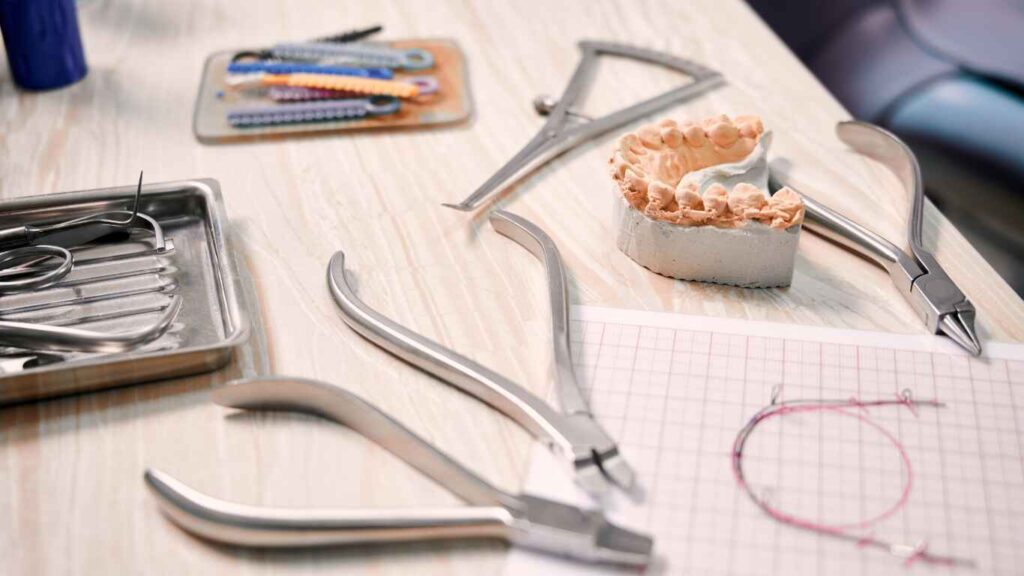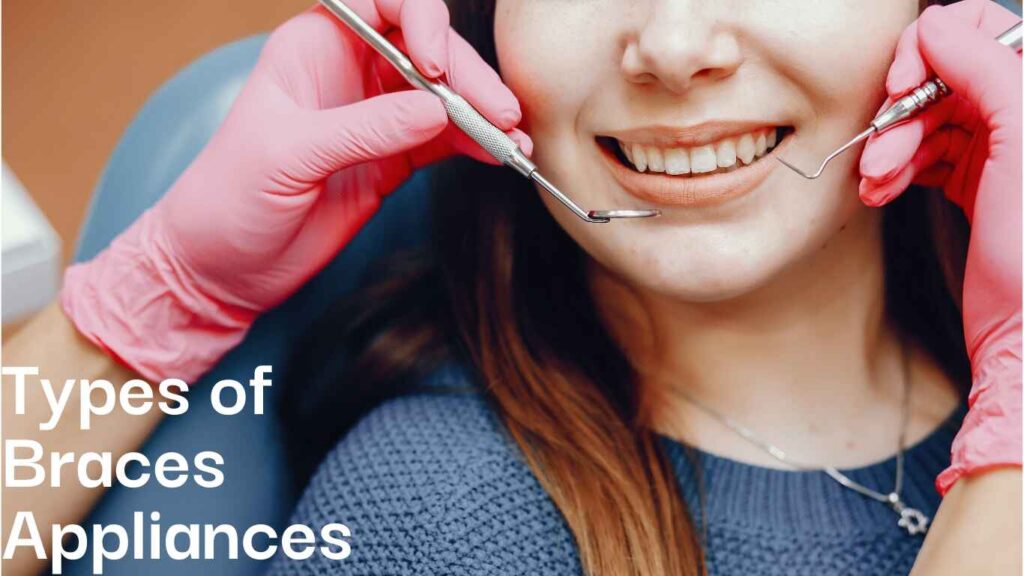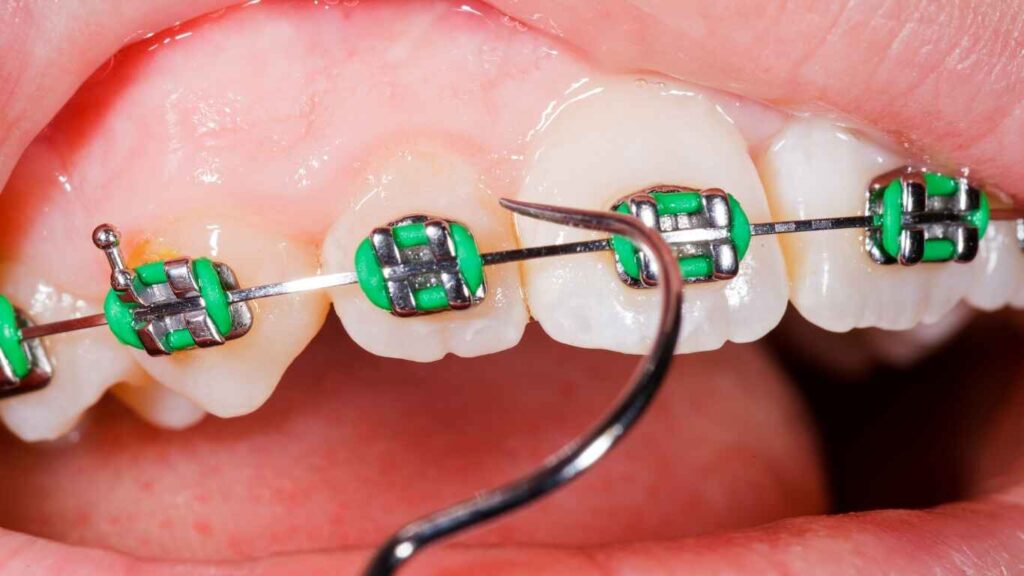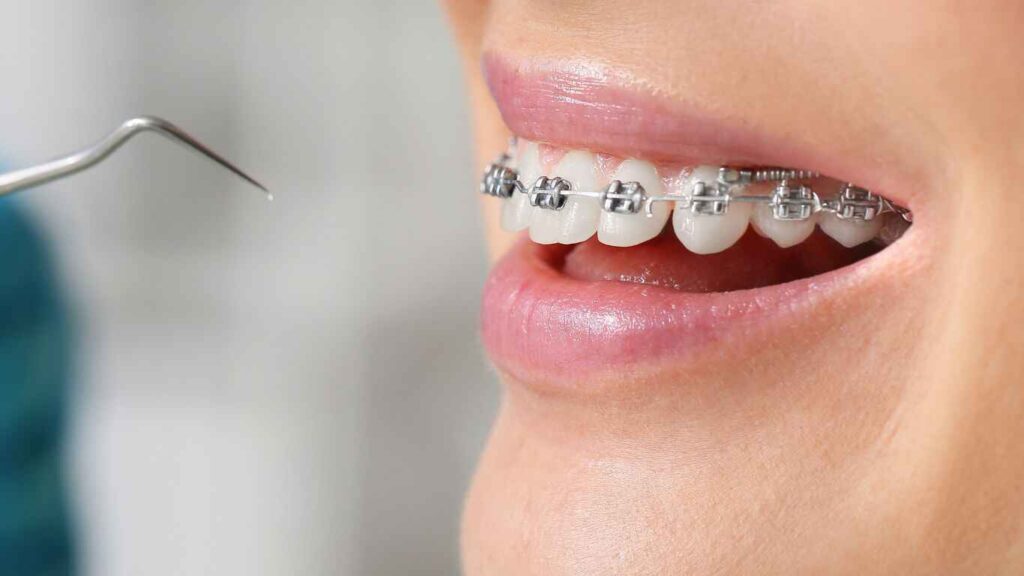Braces Appliances: Your Ultimate Guide to a Perfect Smile
Updated: 20 Feb 24
268

The Braces appliances are used to treat various teeth issues. These devices are tiny enough to fit in your mouth but can do wonders for your oral health.
They can treat and correct malocclusions (misalignments of the teeth), close gaps between teeth, and many more.
Issues like underbites, overbites, crossbites, deep bites, open bites, crooked teeth, and many other flaws of the teeth and jaw are also curable with the regular advancements in the orthodontist field.
In this article, you will see all about braces appliances, how they help, and when to get them for different cases.
Table of Contents
Types Of Braces Appliances

Let’s see the types of braces appliances in detail.
- Separators Or Spacers
Separators are small latex-free rubber bands used to widen the gaps between molars. They are used at the beginning of braces treatment for a short period till the desired width among the molars is achieved.
- Twin Block Appliance
Twin block appliance is a functional device used to flawlessly push forward the lower jaw to get aligned with the upper jaw. It consists of an upper and a lower part that work together.
It is a removable appliance and could be easily removed as per choice, but if you don’t wear it regularly, your bite will not be corrected.
- Lingual Arch
An orthodontic device that connects molars in the upper or lower dental arch. They help to anchor the molars. They maintain arch length by hindering the mesial movement of molars and the lingual collapse of lower incisors.
- Clear Braces
Clear braces target many orthodontic issues ranging from crooked, gapped, rotated, or crowded teeth. Braces enhance the appearance of teeth and provide multiple benefits, from fixing your bite to preventing gum diseases to improving your speech and many more.
- Mara
Mara is a fixed orthodontic appliance specifically used to bring the patient’s lower jaw forward so that the top and bottom teeth smoothly meet.
It is a fixed appliance, and these metal braces are favored by orthodontists over other traditional braces for treating severe dental issues such as overcrowding and misalignment.
Moreover, metal braces offer the precision necessary for moving teeth in small increments, providing orthodontists with the required control.
- Removable Appliances
Removable appliances are helpful in conditions when your teeth need some extra support without the added burden of permanent appliances.
It is made from an acrylic plate with delicate wire and spring attached to it that allows the movement of the tooth that is trapped behind the bite, in turn correcting it.
- Invisalign
Invisalign is a relatively new treatment that uses clear, customized aligners to move your teeth. This treatment is much faster than traditional braces.
- Nance Appliance
Nance appliance is specifically used to prevent the upper molars from moving forward or rotating after extracting any primary teeth for any orthodontic procedure.

- Orthopedic Appliances
Orthopedic appliances generally use teeth as anchors to exert force on the underlying skeletal structure to position and align the teeth. These appliances are most effective during the transitional dentition period as they take advantage of the prepubertal growth spurt.
- Bite Plate
A bite plate is a removable orthodontic appliance that is used to remove the overbite of the front teeth effectively.
They are generally used at the initial stage of any oral treatment as they facilitate proper adjustments for the procedure, making the treatment as comfortable as possible.
- Lingual Braces
Lingual braces are specifically used to treat severely crowded teeth, teeth with wider gaps, or teeth that don’t bite accurately.
Lingual braces can be used as an alternative to traditional braces, the difference being they are fixed at the lingual side of teeth and seem nearly invisible.
- Bi Helix
Bi Helix is an appliance that is helpful to widen the upper jaw in conditions where permanent teeth do not have enough room to erupt correctly, leading to overcrowding, crossbite, or misalignment of teeth.
It should be done in the early formative years to avoid hefty invasive procedures later.
- Pendulum
A pendulum appliance creates more room on the upper jaw by moving the upper molars back to give enough space for the overcrowded teeth to settle in properly, hence aligning the teeth.
Orthodontists recommend it because it involves aligning crowded teeth without extracting permanent teeth.
It is mainly used in children and young teenagers to treat an underbite.it is used during the transition period of teeth growth, precisely the prepubertal period when the jaw’s positioning is less complex.
- Biteplane
Bite planes are orthodontic appliances used to overcome a deep bite condition by preventing the posterior teeth from coming in contact. Its function is to reduce muscle activity.it is placed on the front teeth, creating a space for the lower teeth to glide on easily without grinding.
- Transpalatal Arch
The transpalatal arch is used to create space in the maxillary dental arch. It is used when derotation is needed on both sides of the dental arch. They hold up the upper molars in their place to stabilize their position during and after the movement of other teeth.
- Expanders
The expander appliances are used to widen the palate of the mouth to bring alignment in both the jaws and give enough room for the crowded teeth to settle in.
These expanders help prevent the extraction of permanent teeth, and these results are used to create a better bite.
- Space Maintainers
Space maintainer appliance is used to manage the premature loss of baby teeth. These maintainers are immediately removed as soon as a permanent tooth erupts.
- Distalizers
Distalizers are orthodontic appliances that are effective in correcting a bite without extraction of any permanent teeth when teeth erupt in an incorrect order. They are essential in obtaining aligning space in orthodontic treatments.
- Guards
Guards are used to prevent any involuntary activity of teeth, like grinding or clenching during sleep, causing damage.
- Habit Appliance
A habit appliance is a metallic gate inserted behind the front teeth on the upper gums.it is placed in the mouth through two braces fixed on the upper molars.
This appliance prevents the upper and the lower from pushing toward an abnormal position. The habit appliance mainly targets open bites and protruding teeth.
Braces Appliances That Attach To The Roof Of The Mouth

- Palatal Expander
Palatal expanders are the orthodontic appliances used to widen the palate of the mouth to align the upper and the lower jaw and give enough room for crowded teeth to settle in.
These expanders consist of two halves connected with a screw mechanism that settles on the roof.
Once they are attached to the molars through bands, they apply gradual pressure on Palatal bones to expand forward. A minor discomfort is reported after connecting these expanders. They are attached for 5-6 months, allowing the newly formed bone to mature.
- Haas Expander
HAAS expanders are designed to widen the upper jaw. These rack-like devices, attached to the roof of the mouth, anchor the molar through their legs, applying controlled pressure to widen the upper jaw. It brings upper and lower jaw alignment while opening and closing the mouth.
- Quad Helix
It’s an orthodontic appliance used primarily for widening the upper jaw, correcting crossbite and narrow arches, and crowding of teeth. It’s a metal wire with four loops anchored to the molars with the help of bands.
They apply continual pressure on the teeth and jaw, helping them to expand outwards. This widening helps in the alignment of the upper and the lower jaw.
- Retainer
After any orthodontic surgery or treatment, you undergo a retention phase; this is when you use retainers to retain the changes made.
During the remodeling (braces phase) of bones, multiple tissues break down to help support the teeth and allow them to move to the desired position.
After the braces are removed, teeth naturally move back to their original position; to avoid that, retainers are used until the tissues tighten up to unfold a new smile for you.
Braces Appliances That Can Cure Overbite
Overbite refers to a condition of vertical misalignment of teeth in which the upper teeth overlap the lower teeth more than they should. If the overbite is ignored or left untreated, it may result in oral health hazards like jaw pain, tooth erosion, and multiple jaw diseases.
Varied treatments and oral surgeries are prevailing to regulate such issues.
- Herbst Appliance
The Herbst appliance is used to align the upper and lower jaw, which helps to improve your bite. Herbst appliance is engineered to move the lower jaw forward while exerting backward pressure on the upper jaw.
It is attached to the molars at the back, both on the upper and lower jaw. This appliance is the best alternative to any orthodontic procedure to improve overbite.
It consists of a piston and a tube anchored to the orthodontic bands, which keeps the jaw in a stretched position 24 hours a day.
Some disadvantages associated with Herbst appliances are the loss of anchor between maxillary canines and first premolars, and chewing problems during the first week of treatment are also reported.
- Palate Expanders
Palatal expanders widen a narrow upper jaw, mainly acting upon overcrowded teeth and crossbites. This appliance needs special care and monitoring; failure to do this may damage oral tissues like gums and teeth.
Palatal expanders work best for children as their upper jaw bones are not fused yet like adults. Removable palatal expanders are also prevailing as they target patients with minor to moderate issues who need minute expansion in their jaw to fix the overbite.
- Biteplane
The bitplane is used to reduce a deep overbite; it is a situation where the upper teeth excessively overlap the lower teeth. It works by preventing the patient from biting from his back teeth, allowing the back teeth to emerge naturally to reduce the overlap of the front teeth.
- Removal of Baby Teeth
Removal of baby teeth is an ideal procedure to create enough room for overcrowded teeth and to cure your overbite. Teeth removal is better for children, but extraction for adults may not be required.
Braces Appliances – Painful Or Not
A mild soreness or discomfort is associated with braces appliances. A few things to expect in the initial days of any orthodontic procedure include sore gums and scraped or sored inside of the cheeks due to metal brackets coming in contact and rubbing against the inside of the cheeks.
The tongue may get minute cuts when coming in contact with braces, and teeth may feel sore, especially while eating food. This initial pain and discomfort may fade away with time when you get used to the braces and your body adjusts to the change.
Following are the ways to manage the discomfort associated with braces appliances;
- Ice pack
- Orthodontic Wax
- Oral Numbing Gel
- Good Dental Hygiene
- Salt Water Rinse
- Modifying Diet
- Chewing
Conclusion
As the medical treatments are revolutionizing, the advancements are incredible. The Braces appliances can cure almost every oral issue, and now you don’t have to worry about your smile anymore.
But always remember to consult your orthodontist because they will determine the best type of braces for any individual case.
We hope this article clears all your questions regarding braces appliances. If you still have any questions, feel free to add comments below.
You May Also Like These Post
- All About Self-Ligating Braces
- How Rubber Bands Are Helpful With Braces
- Navy Blue Braces – A Decent Color Choice
- Braces Color palette – Your Smile Is A Canvas
Please Write Your Comments